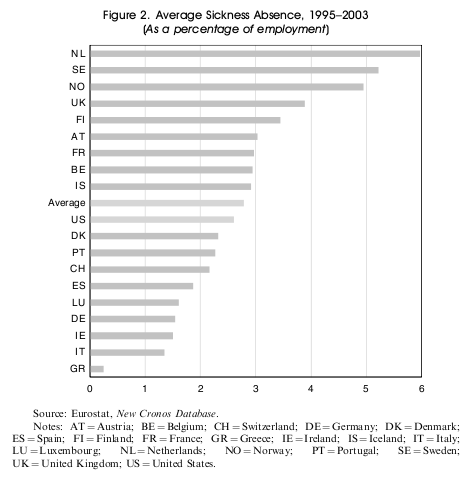This John Schmitt takedown of economist/New York Times blogger Casey Mulligan seems pretty damning. Mulligan made the argument that requiring paid sick days is counterproductive because it causes people to stay home when they are not sick. Schmitt explains why this could be wrong:
The current system—which does not require employers to provide paid sick days and leaves upwards of 50 million workers without paid sick days—gives strong incentives to workers to go to work sick, lowering productivity and potentially spreading illness.
Of course, offering paid sick days also gives workers incentives to take time off when they are not sick. There is nothing in Mulligan’s post that says where we should set the optimal level. He doesn’t even make a case that the most generous systems in Europe are too generous, just that they lead to more sickness absences in some cases. For all we know, after we factor in the cost of contagious diseases, the most generous European systems might still be too stingy.
Here’s where it gets embarassing for Mulligan and the Times. To support his point, Mulligan published a graph showing how the Netherlands, Sweden, and Norway, which have statutory sick leave laws, all have higher absenteeism than the United States.
 But Mulligan pulled very selectively from his source material, a chart by the International Monetary Fund. Here’s the real chart:
But Mulligan pulled very selectively from his source material, a chart by the International Monetary Fund. Here’s the real chart:
 Over to you, John:
Over to you, John:
In the original, Denmark, Germany, and seven other countries with more generous statutory paid sick days policies all have lower sickness absence rates than the United States. A really interesting question is: how is it that these countries are able to provide both guaranteed paid sick days and lower sickness absence rates? (And why didn’t Mulligan include these countries in his graph?)
Um, because he was being dishonest?













